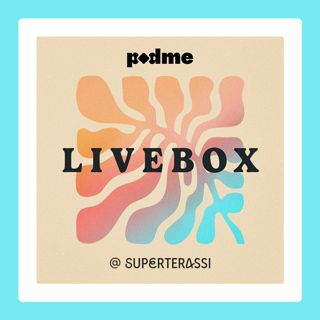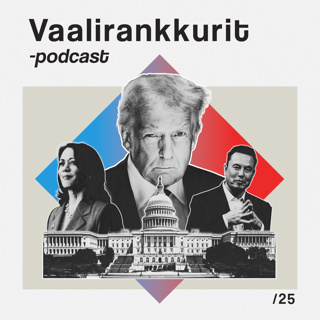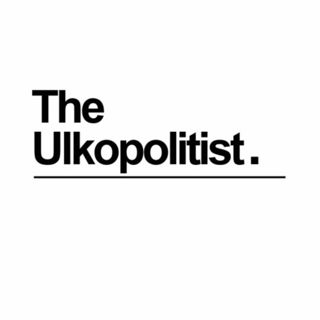
Fashion Industry Transformation: Navigating Opportunities and Challenges in a Shifting Landscape (138 characters)
The fashion industry is undergoing significant transformations, reflecting broader economic, technological, and cultural shifts. Over the past 48 hours, major updates have highlighted both progress and challenges across the sector.Calvin Klein’s recent advertising campaign featuring Bad Bunny achieved exceptional success, generating $8.4 million in Media Impact Value (MIV) within just 48 hours. This underscores the effectiveness of celebrity-driven marketing and the brand's ability to captivate audiences globally. Similarly, H&M announced its use of artificial intelligence to create digital "twins" of models for marketing, a move signaling the industry's deeper integration of advanced technologies to enhance efficiency and consumer engagement.Sustainability continues to be a focal point. The resale market is thriving, with the U.S. secondhand apparel sector growing five times faster than the broader retail market, projected to reach $74 billion by 2029. Platforms like Vinted are capitalizing on this trend, launching new curated collections featuring influencer wardrobes. However, this progress contrasts with ongoing issues such as the fast fashion industry's environmental impact, highlighted by actions to reduce clothing waste in regions like Chile’s Atacama Desert.The luxury market is navigating a turbulent period. Reports from McKinsey reveal that only 20% of executives foresee improved conditions in 2025, with 39% anticipating further declines. While inflationary pressures have forced many brands to adjust pricing strategies, the luxury sector continues to bank on high-net-worth individuals and tourism rebound, particularly in regions like Europe and Asia.Emerging collaborations are reshaping the industry. Notable examples include the Reebok and White Mountaineering partnership, which will launch a collection blending performance and style aesthetics in April. Similarly, Louis Vuitton’s renewed collaboration with Takashi Murakami is sparking nostalgia and excitement, reconnecting with consumers through artistry and innovation.A shift in consumer behavior is evident as older demographics increasingly drive spending. Furthermore, there is growing demand for transparency and eco-conscious practices, juxtaposed with continued interest in fast fashion for affordability. Brands are responding through AI-driven personalization, sustainability initiatives, and targeted strategies to maintain competitiveness in the shifting landscape.Overall, the industry faces a crossroads. While growth opportunities exist in technology, sustainability, and emerging markets, challenges such as inflation, changing consumer behavior, and global economic uncertainties require adaptive, innovative approaches.This content was created in partnership and with the help of Artificial Intelligence AI
2 Huhti 3min

Fashion's Crossroads: Navigating Economic Shifts, Sustainability, and Consumer Trends in the Industry
The fashion industry is experiencing significant shifts in the past 48 hours, reflecting broader economic uncertainties and changing consumer behaviors. Forever 21, once a fast-fashion staple, has filed for bankruptcy for the second time in six years. The company's U.S. retail operator plans liquidation sales, citing competition from foreign fast-fashion companies and the impact of the de minimis tax exemption as key factors in its struggle.In contrast, the resale market continues to thrive. ThredUp's 2025 Resale Report reveals that the U.S. secondhand apparel market grew five times faster than the broader retail clothing market in 2024. It's projected to reach $74 billion by 2029, with an average annual growth rate of 9%. This growth is partly attributed to changing consumer preferences, with 58% of U.S. consumers reporting they shopped secondhand apparel in 2024, up 6 percentage points from the previous year.The luxury sector is facing its own challenges. According to the BoF-McKinsey State of Fashion 2025 report, only 20% of fashion executives expect improved conditions in 2025, while 39% anticipate further deterioration. The industry is shifting from a post-pandemic boom to low single-digit expansion, compelling brands to focus on market share rather than overall market growth.Sustainability remains a key focus, with consumers increasingly demanding transparency and eco-friendly practices. However, the industry faces a paradox as the same consumers who prioritize sustainability are often drawn to fast fashion due to price considerations.In response to these challenges, brands are reevaluating their strategies. Some are exploring AI and technology integration to enhance product discovery and personalization. Others are pivoting to focus on older consumers, recognizing that the "silver generation" will drive 48% of global spending growth in 2025.The fashion industry is at a crossroads, balancing economic pressures, changing consumer preferences, and sustainability imperatives. As it navigates these challenges, innovation in technology, sustainability, and consumer engagement will be crucial for brands seeking to thrive in this evolving landscape.This content was created in partnership and with the help of Artificial Intelligence AI
1 Huhti 2min

Fashion Industry Navigates Uncertainty: Collaborations, Supply Chains, and Sustainability Trends
The fashion industry continues to navigate a complex landscape in early 2025, balancing economic pressures with evolving consumer demands. Recent data from McKinsey's State of Fashion report indicates cautious sentiment among industry leaders, with 39% expecting worsening conditions and only 20% anticipating improvements.Despite challenges, several notable developments have emerged in the past 48 hours. Luxury powerhouse Louis Vuitton announced a highly anticipated collaboration with Japanese artist Takashi Murakami, reviving their iconic 2003 partnership. This move signals a strategic embrace of nostalgia marketing amidst uncertain times.In the fast fashion sector, H&M revealed plans to partner with Belgian designer Glenn Martens, known for his work with Diesel and Y/Project. This collaboration aims to bring avant-garde designs to mass market consumers, potentially boosting H&M's appeal among trend-conscious shoppers.Supply chain concerns remain prominent, with ongoing geopolitical tensions impacting global trade. The implementation of new tariffs on Chinese imports by the Trump administration has prompted brands like Steve Madden to accelerate plans to diversify sourcing. The company aims to reduce its reliance on Chinese manufacturing by up to 45% in the coming months.Sustainability continues to drive innovation, with the vegan fashion market projected to reach $1.12 trillion by 2028, up from $460 billion in 2021. This growth reflects increasing consumer demand for ethical and environmentally friendly products.In the luxury segment, Estée Lauder-owned Tom Ford appointed Haider Ackermann as its new Creative Director, signaling a potential shift in aesthetic direction for the brand. This move comes as the luxury sector faces headwinds, with non-luxury players expected to drive the majority of economic profit growth for the first time since 2010.The rise of value-conscious consumption persists, with over 60% of consumers in major markets actively seeking to reduce fashion spending. This trend has benefited off-price retailers like TJX and Ross, which saw 4.6% revenue growth in 2024, outpacing the broader market.As the industry adapts to these shifting dynamics, brands are increasingly focusing on demonstrating value through quality, strategic pricing, and alternative channels like resale platforms. The coming months will likely see further adjustments as companies strive to balance profitability with changing consumer expectations in an uncertain economic climate.This content was created in partnership and with the help of Artificial Intelligence AI
31 Maalis 2min

Fashion Industry Navigates Sustainability and Innovation Amidst Evolving Challenges in 2025
The fashion industry continues to navigate a complex landscape of challenges and opportunities in early 2025. Recent market data shows moderate growth, with global fashion sales up 2.3% compared to the same period last year. However, regional disparities persist, with stronger performance in North America and parts of Asia offsetting slower growth in Europe.Several notable partnerships and collaborations have been announced in the past week. Luxury brand Louis Vuitton unveiled a surprise collaboration with streetwear label Supreme, launching a limited-edition capsule collection that blends high fashion with urban aesthetics. This move reflects the ongoing convergence of luxury and streetwear segments.In the fast fashion sector, H&M announced a partnership with AI company Anthropic to develop more accurate demand forecasting and reduce overproduction. This initiative aims to address growing consumer concerns about sustainability and waste in the industry.Emerging competitors continue to disrupt traditional retail models. Rental platform Nuuly reported a 45% year-over-year increase in active subscribers, indicating the growing popularity of clothing rental services among younger consumers seeking more sustainable and affordable fashion options.On the product front, Adidas launched its most sustainable sneaker to date, made from 95% recycled materials and designed for easy disassembly and recycling at end-of-life. This release aligns with increasing consumer demand for eco-friendly fashion choices.Regulatory changes are also impacting the industry. The European Union recently proposed new legislation to curb fast fashion, including mandatory durability standards and restrictions on the destruction of unsold inventory. Fashion brands are closely monitoring these developments and assessing potential impacts on their operations.In response to ongoing supply chain disruptions, many fashion retailers are accelerating their shift towards nearshoring and diversifying their supplier base. Zara parent company Inditex announced plans to increase production in Portugal and Morocco, reducing reliance on Asian manufacturing hubs.Consumer behavior continues to evolve, with a growing preference for versatile, multifunctional clothing items. This trend is driving innovation in adaptive and convertible fashion designs.Overall, the fashion industry remains in a state of flux, balancing economic pressures with the need for sustainability and innovation. Industry leaders are focusing on agility and responsiveness to navigate these complex market conditions.This content was created in partnership and with the help of Artificial Intelligence AI
28 Maalis 2min

Fashion's Resilience in Uncertain Times: Navigating Challenges and Embracing Digital Transformation
The fashion industry continues to navigate a complex landscape of economic uncertainty, shifting consumer behaviors, and technological advancements in early 2025. Recent data from McKinsey's State of Fashion report indicates that 84% of industry executives expect market conditions to decline or remain stagnant this year, reflecting ongoing concerns about inflation and consumer spending.Despite these challenges, the global fashion market is projected to reach $3.3 trillion by 2030, driven by emerging markets and digital innovation. The fast fashion sector, in particular, is showing resilience, with the market expected to grow from $141.23 billion in 2024 to $163.21 billion in 2025, a 15.6% increase.In the luxury segment, collaborations continue to generate buzz and drive sales. Louis Vuitton recently partnered with Japanese artist Takashi Murakami for a nostalgic revival of their iconic 2003 collection, while Balenciaga teamed up with Under Armour to merge high fashion with performance wear.Sustainability remains a key focus, with consumers increasingly favoring eco-friendly materials and practices. The vegan fashion market, valued at $460 billion in 2021, is projected to reach $1.12 trillion by 2028, reflecting growing awareness of environmental and ethical concerns.Digital innovation is reshaping the industry, with AI-driven personalization becoming an expectation rather than a luxury. Brands are investing in technologies like virtual fitting rooms and blockchain to enhance the shopping experience and improve supply chain transparency.In response to economic pressures, many fashion companies are prioritizing cost improvements and strategic pricing. Off-price retailers like TJX and Ross continue to outperform the broader market, with revenues growing 4.6% in 2024 compared to the industry average of 2.6%.Recent leadership changes are also making waves, with Jonathan Anderson stepping down as Loewe's creative director after over a decade, and Donatella Versace departing from her family's namesake brand.As the industry adapts to these evolving realities, brands that can balance innovation, sustainability, and value are best positioned to thrive in the current climate.This content was created in partnership and with the help of Artificial Intelligence AI
26 Maalis 2min

Fashion Industry Adapts to Economic Challenges in 2025
The fashion industry continues to navigate a challenging landscape in early 2025. Recent data shows global apparel sales growth slowing to 2-3% year-over-year, down from 4% in 2024. Inflation and economic uncertainty are driving more price-conscious consumer behavior, with 75% of shoppers opting for lower-cost alternatives according to a McKinsey survey.In response, major retailers are focusing on cost control and profitability. Fast fashion giant H&M reported a 3% drop in Q1 profits last week, citing higher raw material and labor costs. The company announced plans to close 50 underperforming stores globally in 2025.Luxury brands are faring somewhat better, buoyed by resilient high-income consumers. LVMH posted 5% revenue growth in Q1, though this was down from 9% growth in the same period last year. The group highlighted strong performance in Asia, particularly Japan and South Korea, offsetting weakness in China.Sustainability remains a key industry focus. Levi's unveiled its new "Circular 501" jeans made from 20% recycled denim last Tuesday. Meanwhile, Stella McCartney partnered with biotech firm Bolt Threads to develop mushroom leather alternatives, set to debut in Fall 2025 collections.Digital innovation is accelerating. Tommy Hilfiger launched an AI-powered personalized shopping experience on its e-commerce platform, using customer data to dynamically adjust product offerings and marketing. The brand reported early results showing a 15% increase in conversion rates.Supply chain pressures are easing slightly, with shipping costs declining 8% from Q4 2024. However, ongoing geopolitical tensions are prompting brands to diversify sourcing. Gap Inc announced plans to reduce its reliance on Chinese manufacturing from 20% to 15% by year-end.Looking ahead, industry executives remain cautious. A BoF-McKinsey survey found only 20% expect improved consumer sentiment in 2025, while 39% anticipate worsening conditions. Brands are prioritizing agility and efficiency to navigate the uncertain environment.This content was created in partnership and with the help of Artificial Intelligence AI
25 Maalis 2min

Fashion's 2025 Trends: Collaborations, Sustainability, and Digital Experiences
The fashion industry continues to navigate a complex landscape of economic uncertainties and shifting consumer behaviors in March 2025. Recent data from McKinsey's State of Fashion report indicates that revenue growth is expected to stabilize in the low single digits for the year, with non-luxury segments driving the majority of economic profit increases for the first time since 2010, excluding the pandemic period.In the past 48 hours, several notable developments have shaped the industry. Sofia Richie Grainge's collaboration with Tommy Hilfiger, titled "Sofia for Tommy," launched with 24 refined pieces inspired by the brand's archives. This partnership exemplifies the ongoing trend of celebrity-designer collaborations aimed at attracting younger consumers.Sustainability remains a key focus, with Thread Together's "New Beginnings" campaign highlighting the transformative power of fashion for those facing hardship. The initiative has partnered with nearly 2,000 brands to rescue millions of unworn garments from landfills, demonstrating the industry's growing commitment to ethical practices.In luxury fashion, Louis Vuitton and Japanese artist Takashi Murakami have announced a revival of their iconic 2003 collaboration, set to launch later this year. This move reflects a trend of revisiting successful past partnerships to capitalize on nostalgia while attracting new audiences.The digital landscape continues to evolve, with recent data showing that 47.5% of US online fashion shoppers report their most recent purchase was inspired by social media. Brands are increasingly focused on creating exceptional digital experiences to align with consumers' empowered purchasing decisions.Emerging competitors are making waves, particularly in the sportswear category. The Wunderkind 2025 Consumer Insights report reveals that almost half of millennials and Generation Z consumers shop fashion websites monthly, with high quality being a significant motivating factor for these younger shoppers.In response to ongoing economic pressures, many fashion executives are implementing strategic price increases and focusing on cost improvements. According to the BoF-McKinsey State of Fashion Executive Survey, 72% of fashion executives plan to increase prices in 2025, while 37% expect to prioritize cost improvements.As the industry continues to adapt to these challenges and opportunities, brands that can balance technological innovation with sustainability goals, embrace diversity, and create compelling digital experiences are likely to thrive in the evolving fashion landscape of 2025.This content was created in partnership and with the help of Artificial Intelligence AI
24 Maalis 2min





















